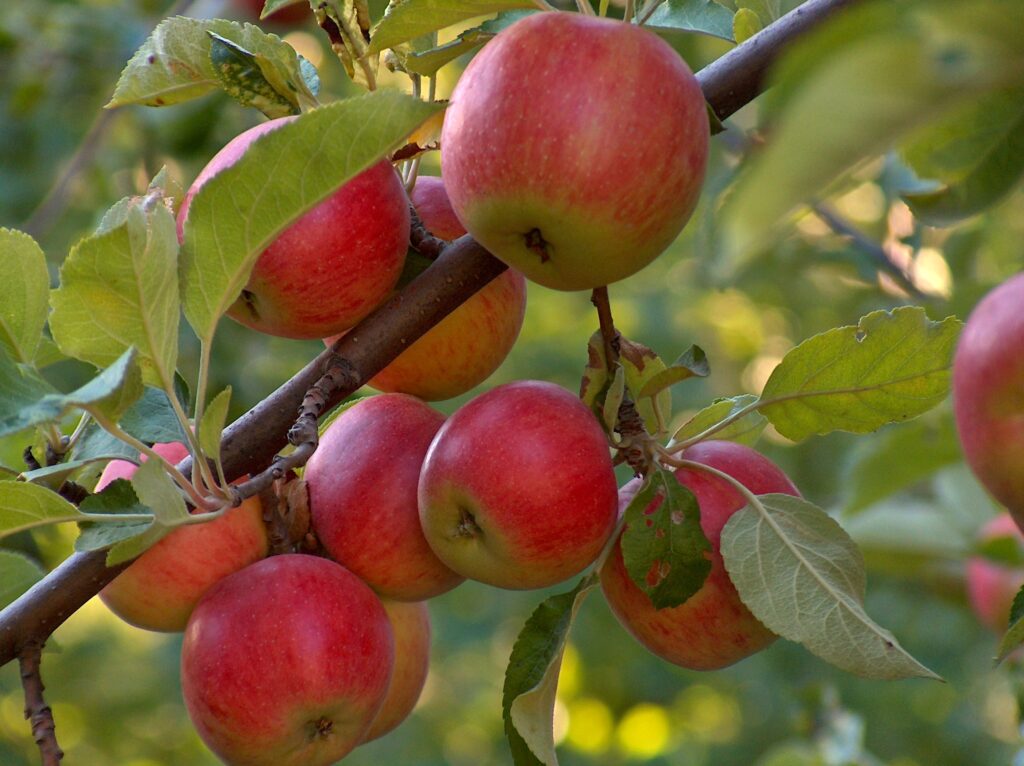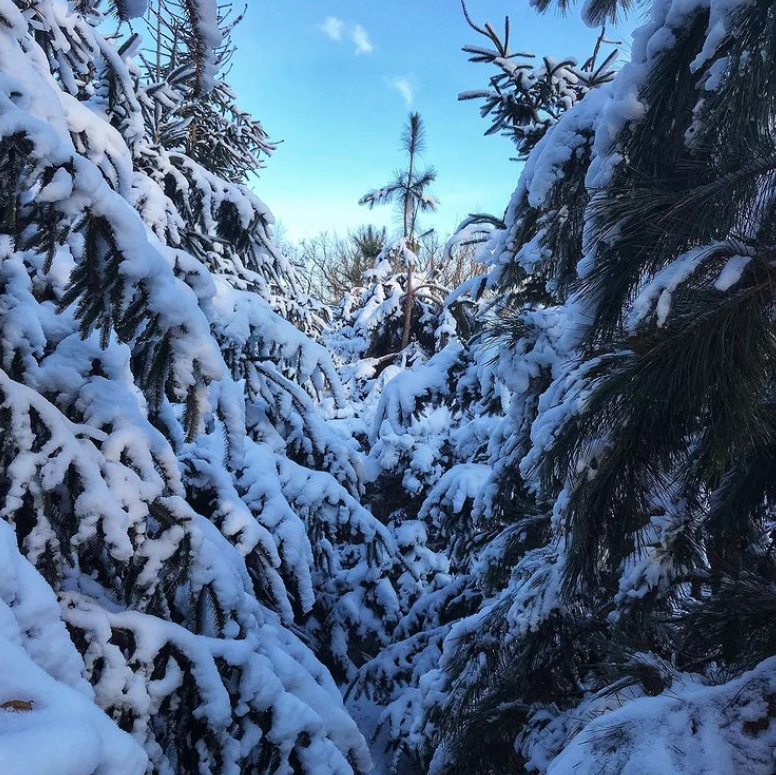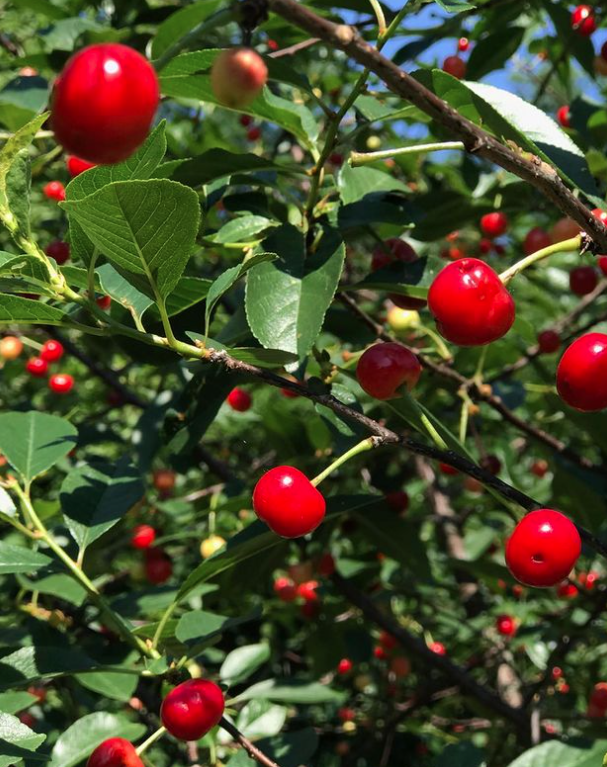The calendar might say snow and bone-chilling temperatures, but our cozy thoughts are on land management projects for spring. Mine are, anyway, and my second outdoor love (next to deer, of course) is trees. Lots and lots of trees!
The biggest question I’ve been seeing lately is one that’s common this time of year: “I want to plant an apple (pear, plum, cherry) orchard … or pine (spruce, cedar ..) trees for windbreaks. Should I buy bare root trees or container stock?”
Just like bringing up religion or politics, this topic is sure to light a debate among some landowners. My personal experience is to plant bare root trees almost every time. If you want the trees to survive, if you want them to flourish for the long-term, bare root trees offer the best chances for success.
But don’t take my word for it. Ask your local fruit grower; a buddy who is an arborist; or just about anyone who make a living off of trees, they will invariably tell you that bare root trees outperform container stock pound for pound when all things are considered.
This is not to say there is no place for container trees. There is. It just boils down to how much time do you have … and how much money do you want to spend — or should I say “risk?”

Let’s look at the pros and cons:
Bare Root Trees: Pros
- Bare root trees are significantly more affordable. For fruit trees, you’ll be looking at anywhere from $12 to $70 a tree, depending upon how fancy you want to get. After planting three apple orchards in my lifetime, I have learned not to like fancy. Instead, I opt for “what grows best for where I’m planting the trees?” Find several species that are suited for your region. And be sure to plant several pollinators. That’s key for fruit production.
- Bare root trees are available in a wide variety of species. Just like with the apple example above, when ordering you can pick and choose the varieties. With potted trees, the selection is usually very small.
- Bare root trees are not “pot bound.” In arborist terms, they won’t develop “girdling roots.” This is a major problem with potted trees of all varieties. I learned this lesson a very hard and painful way after my mom passed away 14 years ago. My friends gave me a gift certificate to a nursery where I used the money to buy a potted maple. My mom loved maples, and I thought it would be a living testament to her. The tree didn’t even make it to 10 years old when I noticed an entire side of it was dead. My buddy, who is an arborist for a major city here in central Wisconsin, came over and informed me that the girdling roots on the tree (curled around the root ball) were formed when it was in the pot. He tried saving it by relieving some of the pressure points, but in the end he said just enjoy the tree for what it is because it wouldn’t last for the long term. I’ve had similar cases with container apple trees that — once that got of fruit bearing age — they tipped out of the ground during late summer storms due to the weight of the pending harvest and the lack of strong root structures.
- Bare root trees establish more quickly. A potted tree might look awesome because it’s already flowering when you plant it, but the transplant shock stays with the tree for quite some time. Sure, the tree lives and grows, but it takes years for those roots to spread and stabilize the tree. Bare root trees seem awfully wimpy when you first plant them, but once they take hold (a year or two), bam! they sure do take off.

Bare Root Trees: Cons
- They do require some catch-up time. Doesn’t matter if its fruit or windbreak, bare root trees need time to develop. The fastest growing cover trees in my area are white pine, red pine, Norway pine, Norway spruce and white spruce (my favorite). Bare root versions of these take a good four or five years before you really start seeing gains. The same can be said of fruit trees. Bare root apple trees require six or seven years for that type of growth.
- Time is against you. If you want immediate results, you will have to go with potted trees. Just be warned, the results might be short lived.
- You usually have to buy in bulk. Unless you have a really good company by you (we have Jung’s here in Wisconsin), you usually have to buy trees in certain quantities. Example, I’m starting my fourth apple orchard this spring. I had to order 25 trees as a minimum to reserve what I wanted.
- Spring is about the only time you can plant. Yeah, I know some folks do it in fall, but the best survival rates will be on spring-planted bare root trees. That really limits you if you don’t have a flexible schedule, plus the weather can be a factor.
- They require babysitting. If you want to plant trees of any kind (bare root or potted) you have to be ready to put in a lot of time taking care of them, watering them, weeding them, tending to disease, damage, etc., if you expect them to survive to maturity.
Container Trees: Pros
- You can plant them pretty much whenever you want. I’ve planted container trees in spring, summer and fall, and have had them survive until the next year. The same cannot be said of bare root trees.
- There’s no rush to plant them. You can buy the tree on Wednesday and plant it next week if you want. For bare root trees, it’s a drop-everything and block off the whole weekend kind of deal.
- Fruit can be expected much sooner. If you just want a few trees for deer apples, container trees can provide that in a year or three.
- Less time fencing. Fruit trees need protection. Fencing efforts for bare root trees is usually a several step process. Smaller fence when they are young; bigger fence as they get older.

Container Trees: Cons
- Cost. Container trees are expensive! It used to be that you could get a good apple tree (Halared, Gala, Honeycrisp) that was about 5-feet tall for just $30. No more. Those trees are going for $100 a pop and more nowadays. Don’t fool around with just two or three trees if you want fruit for deer. You’ll need at least 10 to make a difference. That’s an expensive start-up.
- Loss. You could do everything right — and that means hours of babysitting, weeding and watering — only to have that tree develop girdling roots or split in half … or fall over in a storm. That can happen with any tree, but container trees are more prone to it.
- Not the best options. I don’t know why, but every spring it seems that the big box stores stock the weirdest varieties. If you’re shopping for container trees, I suggest finding out when they are arriving to the location near you and get there ASAP once they come in. If you wait, you’re going to be left sifting through varieties you’ll have to Google to learn more about their pollination dates, harvest yield, zone hardiness, etc. That being said, the best apple variety I’ve ever found came to me in this fashion. I picked up the tree (one — the only one they had at Fleet Farm) at the very end of the growing season about 15 years ago. Turns out is was a State Fair apple. I never thought much about it until the tree finally came to fruiting age. OMG … best eating apple ever! My new orchard will feature four of these trees (along with 20 other trees of four other varieties).
- Evergreens: Don’t waste your time with container trees. That’s just my advice. If you want to spend the money and the time learning for yourself, it’s a free country!











































